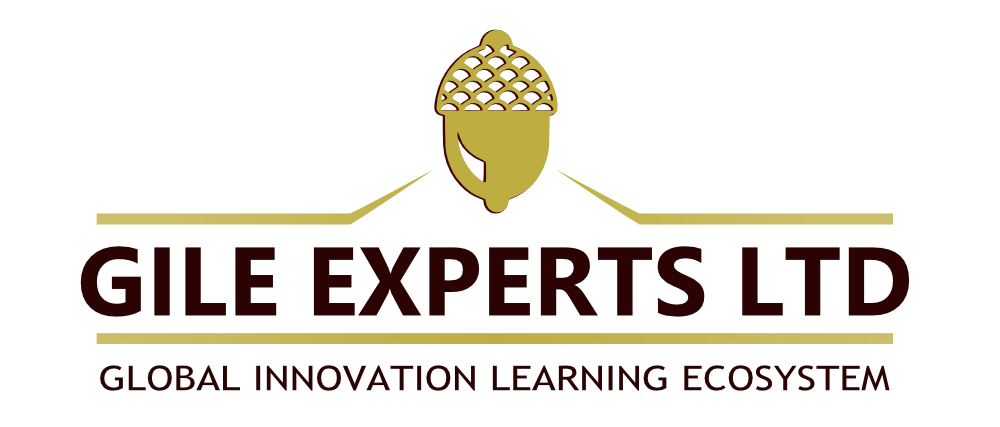What can we learn from the top entrepreneurship performers?
Throughout the past few decades, Global Entrepreneurship Monitor leaders have been observing innovation and entrepreneurship as key factors for sustainable economic and social growth of a country. Innovation and entrepreneurship are tightly connected to one another and depend on many other factors, such as education, cultural and social norms (including social trust, uncertainty avoidance and fear of failure or perception and attitude), knowledge of marketing, technologies and digitalization trends, R&D transfer mechanisms, and etc.
According to GILE Experts, EU’s companies often enter the market full of competitors with old products or services, which in many cases is related to insufficient knowledge of marketing and innovation, high levels of fear of failure and predominant imitation (“Copy Cats”) culture of a company.
Innovation-driven firms are critical for economies, because they improve environmental conditions, meet customers’ requirements (in terms of diversification of product portfolio, quality, and social impacts), and reshape the market equilibrium via innovative products and services. Sometimes these innovations are radical (breakthrough), while in other cases — incremental (small modificatins), but they all affect consumer behavior and competitive environmnent of a certain industry (GEM 2017/ 2018). Moreover, rather than focusing on short-term or on-off innovation, companies should invest more into long term innovation projects and the innovation culture overall (including the creativity system, digital marketing, HR and R&D strategies).
According to Lauzikas et al. (2014), in order to catch-up with more developed countries efficiency-driven economies, such as Latvia, Turkey, Argentina, China or Poland, should invest more in R&D and Innovation processes, as well as be more proactive and dynamic; however, based on GEM (2017/2018), entrepreneurs in innovation-driven economies are considerably more innovative, with 31.2% of entrepreneurs considering their products as new within their industries (compared to 23.1% and 21.0% of entrepreneurs in efficiency-driven and factors-driven economies, respectively). In many countries innovation processes might be offset by high levels of fear of failure, weak marketing competences, lack of social trust and insufficient co-operation with other stakeholders; while a well-developed R&D transfer system is one of the most important characteristics of innovation-driven countries.
The role of high-tech and low-tech combination is critical: digitalization and technological innovation in more traditional industries are possible thanks to high-tech solutions and services. In addition to technologies, It is important to acknowledge many other related aspects, such as intellectual property rights, orientation of educational organizations to innovation processes and entrepreneurship, as well as employment of intellectual capital in technologically more intensive industries, such as Information Technologies, Lasers, Mechatronics, Nano Technologies, and Biotechnologies. Innovative companies disrupt low-tech industries via new management models, improved production mechanism, new logistics and even communication style (GEM 2017/2018). Relying on the experience of countries, such as South Korea and Ireland, it is possible to strengthen competitive advantages if the population is highly educated, and foreign high-tech investors are satisfied.
While improving entrepreneurship framework conditions and encouraging investment in R&D, policy makers and experts of governmental programs should focus on the technological intensity, innovation levels, social impacts and the overall quality of entrepreneurs. A special attention should be paid to statistical evidence on how many entrepreneurs are capable to shift from young business (up to 3,5 years) to established business (over 3,5 years); how many entrepreneurs exit their business and what are the main reasons of such career choice.
Orientation to niche market and innovativeness are considered key factors of entrepreneurship quality and success, particularly while shifting from efficiency to innovation-driven business. However, it is very difficult to provide a universal success formula: innovation performance varies from one country to another. According to GEM 2017/2018, innovation intensity is the lowest in Latin America and the Caribbean (22.9%) and highest in North America (39.6%). Innovation-driven countries, such as Luxemburg, Chile and France, take the lead in terms of orientation to niche and innovativeness, where 57.1%, 54.0% and 48.6% entrepreneurs respectively perceive their business innovative (the lowest innovation rate of 8.5% is in Panama; Bosnia and Herzegovina reach 10.9%, and in Indonesia this indicator reads 11.6%).
In more saturated markets, innovation-driven companies face the necessity to find new alternative revenue sources or invest in new areas, such as CSR, sustainability and social innovations. Opportunity-driven people prefer to be employed rather than involved in entrepreneurial activities that are not exciting and value-adding; they are rather rational and know what they want. Therefore, the rate of early stage entrepreneurship activities in innovation-driven economies is lower than in efficiency or factors-driven economies. Nevertheless, there are a few economies (such as Lebanon) with large percentage of early stage entrepreneurship activities and high innovation levels (it is ranked first for established business ownership rate). All in all, Innovation-driven countries focus on quality and new expansion opportunities.
In order to improve the productivity and raise innovation levels of a particular economy or industry, GILE experts emphasize the significance of high-tech and low-tech combination: the most technologically-intensive products should be exported, while low-tech products and raw material should be imported to make foreign trade healthy. The industrial or economic composition in terms of value-added varies from one region, category of a country, or even an economy to another: wholesale/retail (55%) is the principle sector in factors-driven economies, followed by ICT, financial and other services (22%), while agriculture generates 13%; the efficiency-driven economies have less value generated from wholesale/retail (51%), relatively more from ICT, financial and other services (26%), and manufacturing adds (13%); the leading innovation countries have ICT and financial and other services (50%) as the most prevalent economic structures, followed by wholesale/retail (31%) and manufacturing (10%) (GEM 2017/ 2018).
From a regional perspective, wholesale/retail activity is the most prevalent (55.7%) in Latin America and the Caribbean, followed by 21.6% and 27.0% in North America and Europe respectively. As it could be expected, the high-tech and low-tech combination is the healthiest in North America and Europe, because ICT, financial and other services are the most important industries in these regions (60.8% and 48.3%, respectively), while in Africa this number reads 15.5% (which might be related to weak R&D transfer mechanisms or insufficient governmental support). It is interesting to note that Africa (12.6%) and Europe (7.1%) have the highest number of entrepreneurs in the agricultural sector. From a perspective of an individual country, the Netherlands (11.8%), Israel (11.1%), and the United Kingdom (9.6%) are in lead in terms of entrepreneurship activity in the ITC sector.
While relying on GEM 2017/2018 report, GILE experts recommend countries choosing economies which could be their benchmarks in improving entrepreneurship and innovation conditions. For instance, Lithuania and Latvia should pay more attention to positive practices of top performing countries, such as Estonia, Netherlands, Switzerland or even Indonesia. High-tech solutions should be more intensively used in efficiency-driven economies, in particular within more traditional industries, via leveraging digital technology in order to create new products, services and business models or to enter foreign markets. Some worse performing countries (Croatia, Egypt, Iran, Morocco, Puerto Rico, South Africa, and Uruguay) need improve from one third to more than half of the 12 entrepreneurial framework conditions; therefore, positive experience of the top performers might be very useful.
Lauzikas and Miliute (2017) invite countries to orient their education systems to entrepreneurship and innovation as well as to leverage the untapped potential of youth and female entrepreneurship. Promotion of entrepreneurship and innovation for the sake of promotion should not be tolerated; however, not all countries track their entrepreneurship dynamics; many economies do not have long-term quality and monitoring strategies of enhancing entrepreneurship framework conditions, while very frequent reforms without accompanying research could diminish the creative potential of the population in these countries.
Similar challenges emerge in companies. According to Haaker, Bouwman, Janseen and Reuver (2017), Business Management Innovation models facilitate experimentation with uncertainty; and digital technologies are definitely disrupting business models which become continuously evolving and reactive to the dynamic business environment. Moreover, as it was stated during the Harvard Business Review interviews conducted by Sarah Green Carmichael (2016), the innovation culture, talents and knowledge transfer should be taken into consideration while acquiring companies, because often merges and acquisitions are failures due to insufficient attention to human resources or, in other words, cultural and social context of organizations.
Applying positive experience of other countries or companies is critical; however, the specificity of cultural and social norms (for instance, the fear of failure or social trust) must be taken into account – “Tigers do not live in Savannah”. You can find more information on the entrepreneurship dynamics worldwide via: http://gemconsortium.org/.
Bibliography
- GEM 2017/2018 report, available online: http://gemconsortium.org/
- Green Carmichael, S. (2016) The Flash Report: How Digital Business Models Are Changing; How Digital Business Models are Changing, HBR; available online:, https://hbr.org/2016/07/the-flash-report-how-digital-business-models-are-changing
- Haaker, T.; Bouwman, H.; Janssen, W. & de Reuver, M. (2017). Business model stress testing: a practical approach to test the robustness of a business model, Futures. Vol 89, pp. 14-25
- Laužikas, M.; Miliūtė A. (2017) The Role of Education on Entrepreneurship in Lithuania. In: Sauka A., Chepurenko A. (eds) Entrepreneurship in Transition Economies. Societies and Political Orders in Transition. Springer, Cham; ISBN: 978-3-319-57341-0 (Print) 978-3-319-57342-7 (Online)
- Laužikas, M.; Vaiginienė, E.; Miliūtė, A.;Varnienė, S. &Jakimavičius, T. (2014), Impacts of the fear of failure on the Dynamics of entrepreneurship in CEEC belonging to the EU since 2004 // The Future of Entrepreneurship: 7th EMRBI Conference (ISI Proceedings). EuroMed Press, 2014. ISBN: 978-9963-711-27-7. P. 867-887
- Solaimani, S.; Heikkila, M. and Bouwman, H. (2017) Business Model Implementation within Networked Enterprises: A Case Study on a Finnish Pharmaceutical Project; European Management Review, DOI: 10.1111/emre.12124; 1-18p

